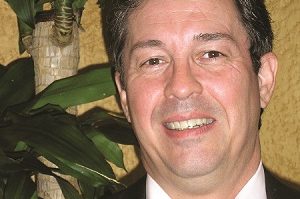TURGI, Switzerland — Operating costs are the focus of every broadcaster today. Optimizing these costs while minimizing impact on public service and AM broadcast signal quality is, for many broadcasters, essential in order to remain profitable enough to stay on the air.
Faced with increasing energy prices, broadcasters are looking for ways to operate their equipment more efficiently. Now there are significant potential savings arising from the implementation of modulation schemes for high power AM transmitters — so called Modulation Dependent Carrier Level algorithms like Dynamic Carrier Control or Amplitude Modulation Companding. Any of these and similar schemes modify the carrier power depending on the degree of modulation depth applied. The potential for energy savings is a result of the particular technology, its configuration and the program content. In typical cases, the power consumption of an AM transmitter can be reduced by 20–40% when compared to regular AM modulation.

Energy savings
These technologies have long been used by international broadcasters operating high-powered AM transmitters. But rising energy costs and easier implementation of MDCL algorithms (even in older transmitters) is focusing attention on ways of extending the benefits. Just recently the U.S. Federal Communications Commission has approved the implementation of such MDCL AM broadcasting in the U.S. on a per station waiver basis, as long as an AM station can maintain its audio quality and coverage area.
Thomson today recommends AMC as the preferred algorithm. Audible impact is minimal but with considerable energy saving.
The principle behind AMC is the absolute peak value detection of the audio signal and the respective dynamic power adjustment. AMC maintains the absolute RF peak voltage almost constant at any modulation level by steadily reducing the carrier and its AF signal. This companding function reduces, for example, the peak voltage to half at 100% modulation, which leads to a quarter of the nominal peak power energy consumption. For broadcasters using audio pre-processing to increase the average modulation level, AMC is a highly economical solution, because AMC works best at high modulation levels.
Recently we have been facing an increasing demand for AMC implementation in older equipment. At first, customers were skeptical about AMC and its impact on the carrier power because of possible deterioration of signal strength and quality in fringe areas. There was also some skepticism about the expected contribution to energy saving.
According to Gerd Höfs, head of the Transmitter Department at Deutsche Welle (DW), these misgivings are unfounded.
“We were using DCC or DSB at our high power stations,” said Höfs, “and we were attracted by Thomson’s offer to upgrade our transmitters with AMC to reduce our energy footprint.”
“The upgrades were done in 2006 and 2007 respectively, and results have been very convincing: average values over a longer period show that the use of AMC has reduced our energy costs by 23% as compared to DCC, and by 35% as compared with DSB, with no reduction in signal quality reported. Savings could be even greater, depending on program content and degree of audio compression. We are completely satisfied with this solution and can fully recommend it,” Höfs concluded.
Michael Heer is head of customer services for Thomson Broadcast.
For information, contact Jean-Charles Daninos in France at telephone at +33-1-34-90-30-11 or visit www.thomson-broadcast.com.












